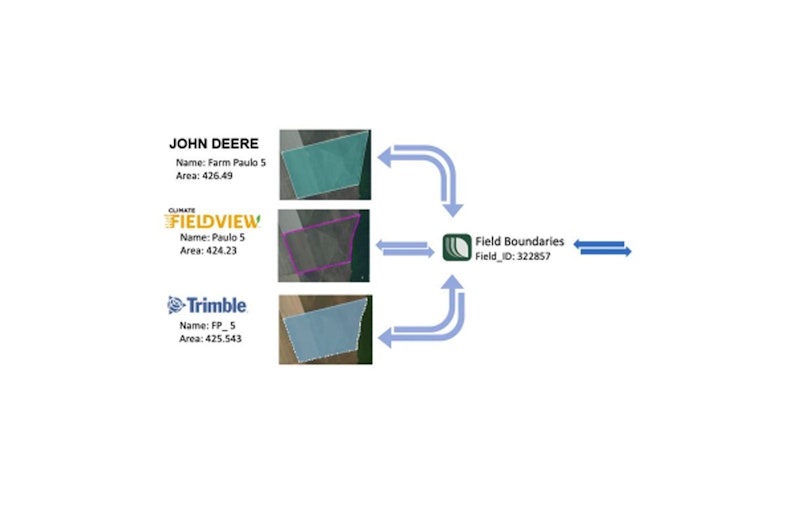Leaf’s mission is to empower Food and Agriculture Developers by making agriculture data easy to access and use. Querying data by Field is a frequent necessity in AgTech products, but field names, boundaries, and registries are often inconsistent across applications and providers. This is an important problem in AgTech since without a consistent field entity it’s impossible to know if data from different sources relate to the same field.
Leaf solves this problem by matching field geometry across applications and mapping Field names, geometry, and season to a consistent, Merged Field ID. This allows Food and Agriculture Developers to easily and automatically query data from any source with a single, consistent Field ID.
To illustrate this problem and Leaf’s solution, the below image shows the same field in the Operations Center of John Deere, Climate FieldView, and Trimble entered with different methods and merged into a unified Field ID.

Terms and Actors
The following actors are present in the Leaf’s machine data integration API:
- Data provider: a machine or machine monitor manufacturer that generates the machine data. In most cases, the Data provider also has an FMIS specialized in their data.
- Data provider API: the source (normally an API) that serves as a gateway to the Data provider data.
- AgTech developer: the developer or the team of developers that are using Leaf’s API to access data from Data Providers.
- End user: In most cases a farmer or a consultant who will be using AgTech applications.
- FMIS: Farm Management Information System. An ERP-like application that farmers and consultants use to organize farm data.
- LeafUser: Leaf’s API uses an abstraction called Leaf User to store credentials and organize data for each individual data owner. In most cases, the Leaf User will be the farmer or consultant that has access to the source data inside the machinery company’s FMIS (e.g. John Deere Operations Center or Climate Field View platform). To create a Leaf User, we can use this guide.
Working with Users and Fields in Leaf:
The data organization for each Leaf User in the Leaf’s API is structured in:
- Grower
- Farm
- Field
- Season
After we create a Leaf User, there are multiple ways we can add and manage Grower/Farm/Field/Season data for each Leaf User:
- Programmatic entry: you can create and add these entities programmatically from an existing user list or new registration.
- Import: you can import these entities from any source connected to Leaf with your user’s authorization.
- Merge: you can merge entities into a consistent, single entity across data sources for simplified management and reference.
We will go into detail and show examples of each method below.
Programmatic entry
To insert a Field into Leaf’s API, we use a MultiPolygon, as described in the GeoJSON standard. This field can be named with the key externalId, where the user can add any unique string to label the field to match their internal field name or reference.
